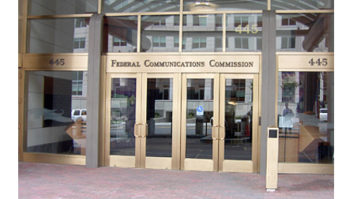With apologies to Monty Python, radio’s not dead yet. It may be premature to conduct a post-mortem on broadcast radio.
But it is worthwhile to consider how the medium might fare in a new digital world. In fact, as my industry colleague Glynn Walden has recently pointed out, after Feb. 19, 2009, radio will be the sole remaining analog mass medium in the United States.
Of course, it is not the only traditional medium facing new competition. Examining radio’s fate vs. that of others in similar straits can provide some interesting insights.
Compared to what
Consider over-the-air (OTA, i.e., local, terrestrial) broadcast television, which was once the nation’s only form of video content delivery, but has since faced competition from VCRs, DVDs, cable and satellite TV.
The latter two sectors have added hundreds of directly competitive new channels onto the same platform that most U.S. consumers now use to receive their local broadcast TV channels.
(About 85 percent of U.S. households subscribe to either cable or satellite TV. Even more of them may do so after the February 2009 analog TV shutdown, since if they only get OTA TV today, they’ll have to do something to keep receiving it after that date, and some of them may use that opportunity to finally take the plunge for cable or satellite service — but I digress.)
The important item to note is how big a share most OTA-TV channels still hold in the cable/sat-TV environment.
They typically maintain audience levels that are highly disproportionate compared to the number of new competitive channels added alongside them by cable and satellite providers.
Their shares are not what they once were, of course, but it is a rare occurrence when any other cable/sat-TV channel draws a larger audience than the major commercial-network affiliated local broadcast channels.
Yet that rarity has begun to happen with somewhat increasing frequency of late. Moreover, the aggregate drain of a large number of non-premium cable channels that are all growing their audiences (e.g., Bravo, A&E, ESPN, TLC, Comedy Central, et. al.) has had increasing impact.
So cable/satellite TV continues to cause a slow leak on OTA TV broadcasters’ fortunes.
(Note that OTA public TV has been hardest hit here, by numerous narrowcast channels presenting the more specialized content types of which PTV used to be the sole provider, like educational, children’s, cooking and documentary programming.)
On the other hand, satellite radio currently only serves about 5 percent of the U.S. population — a far cry from the large majority served by cable and satellite TV.
Although there are no “must-carry” rules for satellite radio, in most cases it presents its additional content right alongside OTA radio on the same platform — an AM+FM+Satellite radio tuner — effectively just like cable/sat-TV does. (There are some satellite radio receivers without AM/FM tuners in handheld form factors, but these are found among an even smaller minority of the national audience.)
Most interesting, however, is research data from Arbitron, which indicate that even these satellite radio-equipped listeners remain loyal OTA radio users.
Among satellite radio owners that Arbitron recently polled, 42 percent of their radio listening was to OTA radio, compared to 33 percent for satellite-channel listening. (The remaining 25 percent was mostly devoted to Internet radio — more on this below.)
Satellite radio owners were also found to be radio fanatics overall, spending an average of 30 hours per week listening to all forms of radio, compared with the national average of 19 hours per week.
So satellite radio may not be the Death Star for OTA radio after all, and in fact could be actually stimulating OTA radio listening.
The proposed merger of the two satellite radio operators would likely have no significant effect on those OTA listening rates, by the way. It might even improve the situation for OTA radio by ultimately creating less choice in satellite offerings through consolidation of similar channels, and possibly inflicting more regulatory constraints on the merged (i.e., monopoly) entity, thus inhibiting its future ability to innovate against competitors.
In a further footnote, public radio has had just the opposite experience from public TV in this new competitive landscape, as we’ve noted before.
Rather than giving up ground to new niche competitors like public TV, public radio has gained new arenas in which to excel, as its commercial radio competitors have abandoned marginal formats like classical, jazz, AAA and in-depth news. The audiences thus inherited have made public radio the strongest audience-growth sector in U.S. radio over recent years.
In summary, both commercial and public radio broadcasters have fared pretty well so far against this first wave of new digital competitors.
And by the way, in case you didn’t notice, I haven’t even mentioned IBOC here. It’s not really a factor in this fight — not yet, at least.
Perhaps it will become another arrow in the quiver down the road (particular given multicasting and datacasting capacity), but for now, OTA radio is holding its own against digital competition almost exclusively via its analog infrastructure.
Competition 2.0
It appears the first wave of the digital broadcasting battle is at stasis, having now reached a certain level of maturity. The real new competition that both radio and TV are worried about next is high-speed Internet. (For radio this applies more specifically to the wireless broadband Internet, which has yet to be widely deployed.)
The Internet is a very different — almost diametrically opposed — competitive environment, however.
Here, instead of broadcasters facing a few, monolithically large and well-funded commercial competitors trying to beat them at their own game as described above, this new online “competitive threat” is actually an open platform — almost a historical accident — that incumbents and upstarts alike can join with equal ease.
Broadcasters have a major advantage, though, in that they can use their legacy “push” platforms as development and promotional springboards for the “pull” environment of the Internet, thereby driving existing, local listeners to their online offerings, then adding Internet-only, local and non-local users.
Although costs factors differ, some radio stations’ total Internet audiences could eventually be as large or larger than their local OTA numbers. (Remember, however, that this advantage applies similarly to all broadcasters, not just OTA. Many cable TV and satellite TV/radio services have already invested heavily in their online presence.)
Perhaps the biggest difference facing broadcasters is that Digital Competition 1.0 was essentially one-way, point-to-multipoint service, just like OTA. Meanwhile, Competition 2.0 is another animal entirely, given the inherent interactivity of its two-way, point-to-point connections.
Here too, however, radio holds an advantage.
In the TV world, the boundary between these competitive environments is blurred because the digital TV aggregators (particularly digital cable) are also broadband Internet service providers, so the aggregators benefit either way. This makes OTA TV channels even more like pure content contributors, despite their recent (and mandated) investments in OTA digital delivery systems.
(Perhaps the Mobile DTV standard currently under development will allow OTA DTV to bear more of its own fruit someday.)
Further, both cable and satellite TV increasingly provide (non-OTA-TV related) on-demand content and other bidirectional services to their television customers.
Radio has no such crossover effect — the border between satellite and Internet radio is clearly defined, both functionally and business-wise. Radio broadcast (OTA and satellite) is exclusively a licensed, one-way world, and Internet radio is an unlicensed and open, two-way environment.
The distinction is straightforward here, although this doesn’t make the Internet any easier to cope with — like OTA, there are more Internet radio services than Internet TV sources, and this will likely always be true.
Again, the Internet radio world includes both OTA and satellite radio companies (worldwide) that are putting their services online, plus the myriad Internet-only providers, creating a far noisier marketplace than the AM/FM dial could ever be.
Broadcasters need to adapt to all of this new reality if they hope to survive. New players and new rules call for new strategies.
Broadcasters must also become accustomed to fighting on multiple simultaneous fronts (ever play 3-D chess?), continuing to play defense against the first competitive wave, while launching a new offense in the second. It’s becoming a whole different game out there.











